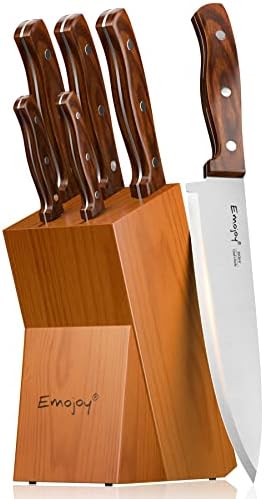Let’s talk knives. Specifically, those gleaming, beautifully crafted stainless steel chef knives that are the backbone of any serious cook’s arsenal. They’re incredible tools, capable of slicing, dicing, and mincing with precision and ease. But with that power comes responsibility. Understanding and practicing safe handling techniques is crucial not only for preventing accidents, but also for preserving the longevity of your valuable knives.
Understanding the Risks: Why Safety Matters
A sharp chef’s knife is a dangerous tool, plain and simple. A slip, a moment of inattention, or even a misplaced finger can lead to serious injuries. Beyond the immediate pain and potential need for medical attention, neglecting proper knife safety can lead to lasting damage to your hand, fingers, or even worse. But it’s not just about avoiding injury to yourself. Improper handling can dull your blades, chip the edges, or even damage the knife’s handle. A dull knife is a dangerous knife, requiring more force to cut and increasing the likelihood of slips and accidents.
Proper Grip: The Foundation of Safe Knife Handling
The way you hold your knife significantly impacts safety and control. Avoid gripping the knife too tightly, which can lead to fatigue and decreased precision. Instead, adopt a relaxed but firm grip, using your dominant hand to control the blade. The pinch grip, where your thumb and index finger gently guide the blade while the remaining fingers support its weight, is ideal for many tasks. For more forceful cuts, like chopping vegetables, consider a full-hand grip, where your fingers curl around the handle for increased stability and control.
Knife Storage: Protecting Blades and Preventing Accidents
How you store your knives is equally important. A cluttered drawer, where knives are jostled against each other, is a recipe for disaster. The blades can chip or dull, while loose knives are a significant safety hazard. Magnetic strips are an excellent solution; they keep your knives organized, easily accessible, and protected from damage. Wooden knife blocks also provide safe storage, however ensure they are well maintained and the knife slots are the correct size for your blades to avoid damage.
Safe Cutting Techniques: Mastering the Art of Controlled Cuts

The way you move the knife is just as important as the grip. Use smooth, controlled motions, avoiding sudden jerks or forceful thrusts. The cutting board should always be stable and non-slip. Anchor your non-dominant hand using a claw grip, keeping your fingers tucked in and away from the blade path. This technique minimizes risk, even if your blade slips.
Maintaining Your Knives: Sharpening and Honing for Safety
A sharp knife is a safe knife. This might seem counterintuitive, but a dull blade requires more force, making it more likely to slip. Regular honing maintains the blade’s sharpness, while occasional sharpening restores its edge. Learn how to properly hone and sharpen your knives, or take them to a professional if you’re uncomfortable doing it yourself. A sharp knife is much easier and safer to control.
Choosing the Right Knife for the Job: Matching Task and Tool

Different knives are designed for different tasks. Don’t attempt to use a paring knife to chop a large onion – it’s not safe and will likely damage the knife. Select the appropriate knife for the task at hand. A larger chef’s knife is ideal for chopping and slicing, while a smaller paring knife is best for delicate work. Using the right tool for the job minimizes risk and maximizes efficiency.
First Aid for Knife Injuries: What to Do in Case of an Accident

Even with the best safety practices, accidents can happen. If you do sustain a knife injury, immediately apply pressure to the wound to control bleeding. If the wound is deep or the bleeding is severe, seek immediate medical attention. Clean the wound thoroughly with antiseptic, dress it with a clean bandage, and seek professional medical care as necessary. Knowing what to do in an emergency can significantly reduce complications and improve recovery times.
Respecting the Tool: A Final Note on Knife Safety

Ultimately, safe knife handling is about respect. Respect the tool, respect its power, and respect your own safety. By implementing these practices, you’ll be enhancing your cooking experience, extending the life of your knives, and ensuring a safer and more enjoyable time in the kitchen.
Keywords:
Stainless steel chef knives, knife safety, kitchen safety, cutting techniques, knife handling, knife storage, honing, sharpening, knife injuries, first aid, safe cooking practices